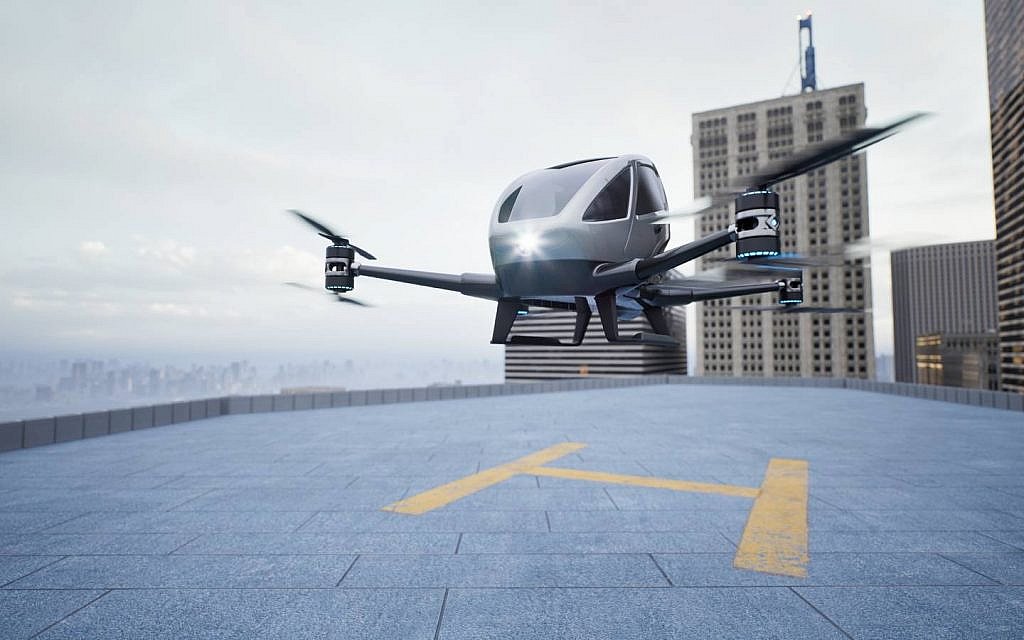The UAE flying taxi trials are scheduled to begin in Al Ain this summer, ushering in a futuristic mode of travel that was once only seen in science fiction. The groundbreaking initiative marks a significant step forward in the country’s ambitions to lead innovation in transportation.
Abu Dhabi’s Integrated Transport Centre (ITC), part of the Department of Municipalities and Transport (DMT), announced the launch of this trial phase. The aim is to create a new, efficient, and eco-friendly way to move people across cities, reducing traffic congestion and travel time.
Why Al Ain Was Chosen for the Trials
Al Ain was selected for the initial UAE flying taxi trials due to its unique geographic features and lower population density compared to other major cities. These characteristics make it an ideal testbed for piloting flying vehicle technologies in a controlled environment.

According to the ITC, Al Ain’s open spaces and controlled airspace allow for safer trials. Authorities believe this setting will help gather accurate data on flight performance, safety, and passenger experience.
What Are Flying Taxis and How Do They Work?
Flying taxis are electric vertical take-off and landing aircraft, commonly referred to as eVTOLs. These aircraft are designed to transport passengers quickly over short distances, much like helicopters but without the noise, emissions, or high operating costs.
The eVTOLs used in the UAE flying taxi trials are expected to be autonomous or semi-autonomous and will be powered by electric batteries, making them an environmentally friendly alternative to traditional transport methods.
These vehicles will operate from designated skyports or vertiports, which are mini airports specifically built for air taxis.
Key Features of UAE’s Flying Taxi Project
Here are some key points about the upcoming UAE flying taxi trials:
- Speed and Efficiency: eVTOL aircraft can reach speeds up to 300 km/h, cutting commute times drastically.
- Eco-Friendly: Operate on electricity, producing zero carbon emissions.
- Safety: Advanced sensors, autopilot systems, and backup mechanisms ensure passenger safety.
- Smart Infrastructure: Vertiports will be built with passenger lounges, boarding zones, and rapid charging stations.
The project is supported by several global tech partners specializing in aviation, robotics, and sustainable mobility.
What Passengers Can Expect
While the flying taxi service won’t be open to the public during the initial trials, the long-term plan includes fully operational air taxi routes across the UAE by the end of this decade.
Passengers in the future can expect:
- On-demand flight bookings via mobile apps.
- Short travel times between key points like airports, business districts, and tourism spots.
- Affordable pricing, eventually on par with luxury ride-sharing services.
The government is also exploring integration with existing public transport systems to offer seamless travel options.
UAE’s Commitment to Smart and Sustainable Mobility

The UAE flying taxi trials are part of a larger national effort to embrace future mobility. In recent years, the country has introduced autonomous buses, electric scooters, and driverless cars as part of its vision to reduce carbon emissions and reliance on traditional vehicles.
By introducing air taxis, the UAE is reinforcing its position as a global leader in transport innovation. Officials have stated that this initiative aligns with the UAE’s Net Zero by 2050 goals and the National Smart Mobility Strategy.
According to Abdullah Al Marzouqi, Director General of the ITC, “Flying taxis are not just a concept anymore. They are a key part of our future transportation strategy, and we are proud to be among the first in the region to take this leap.”
Regulations and Safety Measures in Place
Safety remains a top priority. The trials will be conducted in coordination with the UAE’s General Civil Aviation Authority (GCAA) to ensure compliance with national and international aviation standards.
The GCAA has already started working on the regulatory framework for the operation of eVTOL aircraft. This includes pilot licensing (if necessary), airworthiness certification, flight route approvals, and emergency response plans.
Public awareness campaigns will also be launched to educate people about flying taxi operations, safety, and benefits.
Global Competition and UAE’s Position
Countries like the US, Germany, China, and South Korea are also testing similar technologies. However, the UAE flying taxi trials set the nation apart in terms of speed, planning, and commitment.
Dubai had previously explored air taxi services in 2017 with test flights of the Volocopter. However, the trials in Al Ain mark a more structured and long-term approach, aimed at creating a viable transport ecosystem.
Experts believe the UAE could become the first country in the Middle East to roll out a fully functional air taxi network if the trials go well.
Challenges Ahead
Despite the excitement, there are challenges to overcome:
- Airspace Management: Sharing skies with drones, planes, and helicopters will need tight regulation.
- Public Trust: Convincing people to step into a flying vehicle requires clear safety protocols.
- Infrastructure Costs: Building vertiports and maintenance hubs will require significant investment.
Nevertheless, officials are confident that these hurdles can be addressed with smart planning, public-private partnerships, and technological innovation.
What’s Next for Flying Taxis in the UAE?

If the trials in Al Ain are successful, similar tests may soon follow in Dubai, Abu Dhabi, and Sharjah. The long-term vision includes launching a national flying taxi network with routes between major cities and tourist destinations.
The government is also looking at integrating AI and 5G technologies to enhance aircraft performance and real-time monitoring.
Industry insiders suggest that by 2030, UAE residents and tourists might be able to fly from Dubai Marina to Abu Dhabi Corniche in less than 30 minutes.
Conclusion
The UAE flying taxi trials in Al Ain this summer represent a major turning point in the country’s transportation history. As the world watches, the UAE is not only dreaming of the future — it’s building it.
With clear goals, cutting-edge technology, and a proactive approach, the nation is ready to lift off into a new era of mobility. The sky, quite literally, is no longer the limit.
Read More: Khor Fakkan Oil Spill Forces Swimming Ban at Popular UAE Beach













